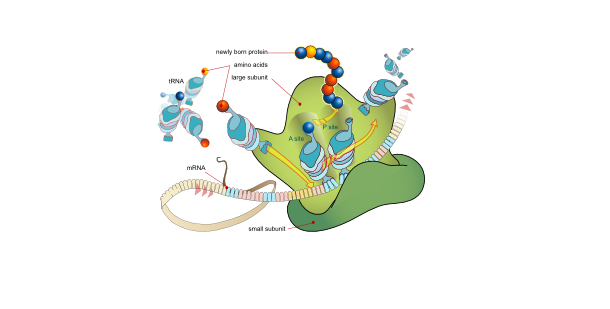Transcription is the process in which RNA is made from DNA. The strand of RNA is made complementary to the DNA. In eukaryotes, this process occurs in the nucleus, while in prokaryotes, it occurs in the cytoplasm. The DNA strand is read, 3’-5’, but the RNA is made in the opposite, 5’-3’, direction.
Initiation
– RNA polymerase, an enzyme, attaches to a specific sequence on the DNA strand, called the promoter
Elongation
– Transcription factors, certain proteins, unwind the DNA double helix
– RNA polymerase transcribes along one strand of DNA, called the antisense strand, and complementary mRNA is produced
– The DNA bases, thymine (T), guanine (G), cytosine (C) and adenine (A), are paired up with A, C, G and uracil (U) respectively. In RNA, thymine is replaced with uracil.
– The sense strand is the DNA strand not transcribed, so it should be the same as the mRNA, but with U’s instead of T’s
– DNA recoils back into its double helix as RNA polymerase moves on
Termination
– RNA polymerase continues along the DNA and stops when it reaches a stop codon
– mRNA is released
After transcription, a series of post-transcriptional modifications occur to the mRNA. These include the addition of a 5’ methylated guanine cap, 3’ poly A tail, removal of introns, and exon splicing. The tail and cap are to protect the mRNA from degradation. The noncoding sequences (introns) are taken out while the coding sequences (exons) are spliced together. After these modifications, the mRNA is now mature mRNA. Proteins are then made from the mRNA in a process called translation
Looking to get ready for the ACT? We can help with ACT Prep
This article was written for you by Samantha, one of the tutors with SchoolTutoring Academy.


